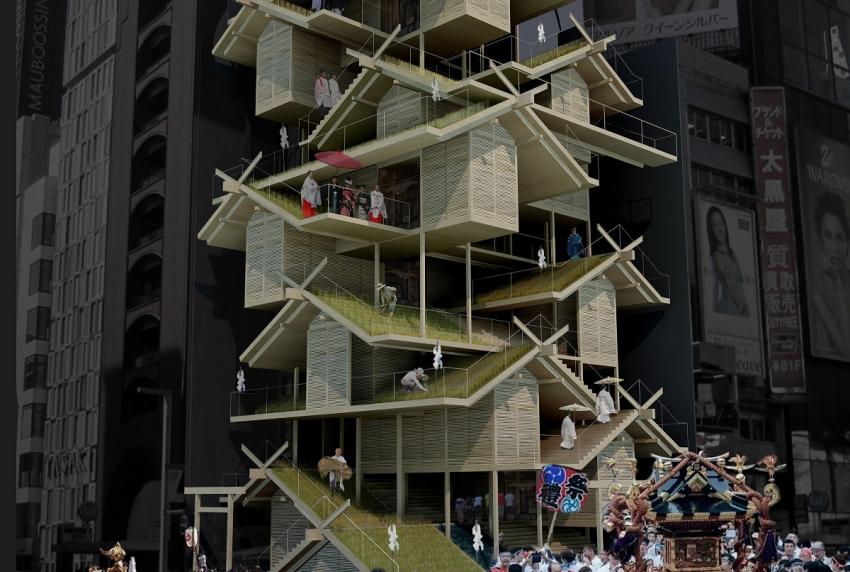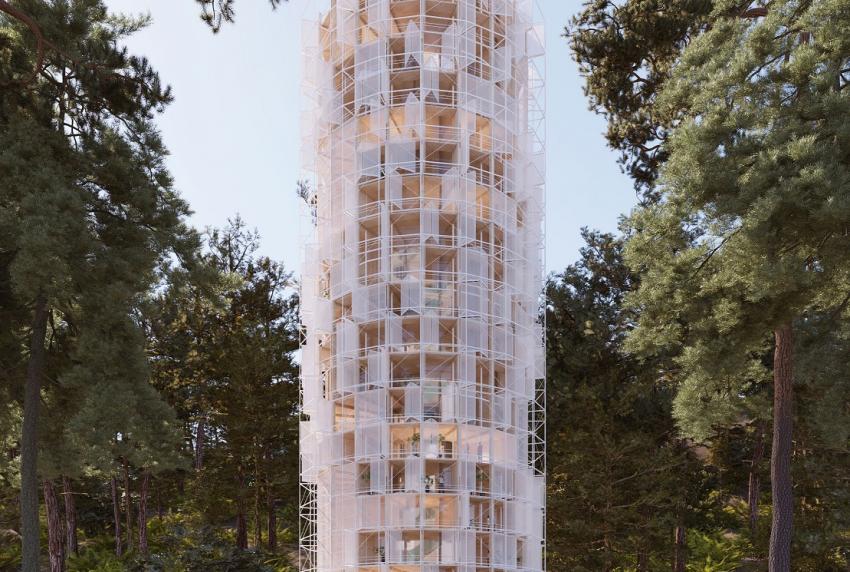Damian Granosik/Jakub Kulisa/Piotr Pańczyk
International
Poland
Origami inspires transportable sky shelter design
A skyscraper might not be the first building that springs to mind as suitable infrastructure in the aftermath of a natural disaster, but an ingenuous design for a multi-storey relief centre has just won the eVolo Magazine 2018 Skyscraper Competition. The annual award, established in 2006, recognises visionary designs incorporating the novel use of technology, materials, aesthetics, and spatial organization. Architects Damian Granosik, Jakub Kulisa, and Piotr Pańczyk from Poland fit the brief this year with Skyshelter, a foldable structure inspired by origami that can be lifted by a helicopter for deployment in disaster zones.
Vertical stacking is an advantage in areas that may be densely populated or need clearance for a relief hub, with the building's footprint taking up to 30 times less ground area than the equivalent amount of conventional tents or containers. After anchoring basic supports to the ground, the structure unfolds by means of a large load-bearing helium balloon. Light-weight 3D-printed slabs attached directly to the balloon are pulled upwards to form the floors, while fabric internal and external walls unfold as the Skyshelter rises.
The design offers flexibility, with differing numbers of storeys unfolding depending on the amount of gas poured into the balloon. Various functions can be accommodated inside, including a reception, first aid area, temporary housing, storage and a vertical farm using soil gathered during the anchoring process.
In second place, the Shinto Shrine Skyscraper by Tony Leung from Hong Kong provides a space for rice farming, spiritual meditation, and community development. Claudio C. Araya Arias from Chile took third place for a design called Waria Lemuy: Fire Prevention Skyscraper, which envisions a new prototype for vertical housing in areas damaged by wild fires, making use of passive systems to mitigate wind and disperse water.
The winners were selected from 526 competition submissions. Honourable mentions were given to 27 projects demonstrating a wide variety of uses, including Sandscrapers to prevent desertification, floating skyscrapers to transform sea water into fresh water and towers to collect fog in arid regions.
Lucy Nordberg
TenderStream Research Specialist & Editor
This competition was first published by Tenderstream on 18.10.2017 here
Start your free trial here or email our team directly at customerservices@tenderstream.com




